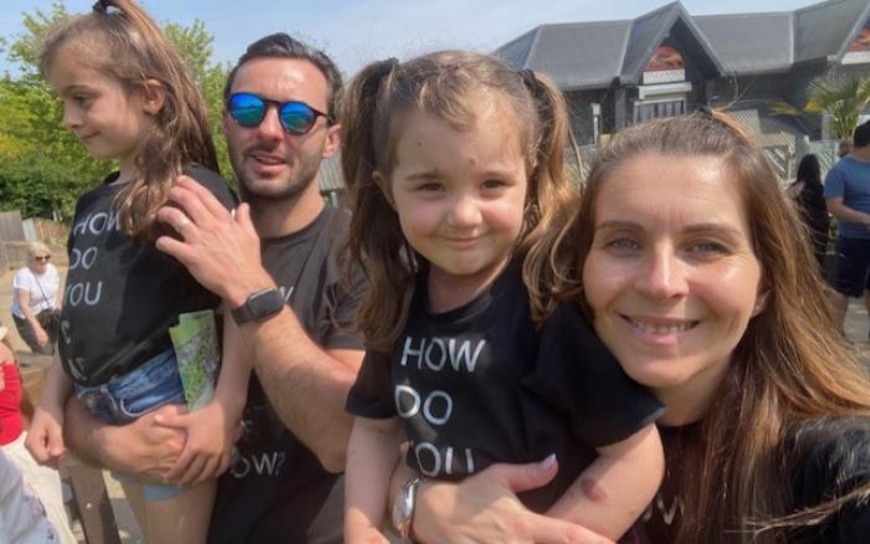We reach more than 65,000 registered users in Dec!! Register Now

Researchers find potential of mole reversal therapy in rare condition
- June 27, 2024
- 15 Views
- 0 Likes
- 0 Comment
Researchers at the Francis Crick Institute, UCL Great Ormond Street Institute for Child Health and Great Ormond Street Hospital for Children (GOSH) have designed a new genetic therapy that could alleviate debilitating giant moles in a rare skin condition.
In the future, the treatment could potentially be used to reverse the giant moles, and therefore reduce the risk of affected children and adults from developing cancer. It could also potentially reverse other more common types of at-risk moles as an alternative to surgery.
Small skin moles are common in the population, but in congenital melanocytic naevus syndrome (CMN), children are born with up to 80% of their body covered in big, painful or itchy moles, caused by genetic mutations acquired in the womb. These moles can sometimes develop into a severe type of cancer called melanoma.
Published today in the Journal of Investigative Dermatology, the researchers silenced a gene called NRAS, which is mutated in the cells in these moles, in cells in a dish and in mice. NRAS belongs to a group of genes (RAS genes) that, when mutated, can cause moles, and can predispose to cancer.
The team used a genetic therapy called silencing RNA, which silences the mutated NRAS in mole skin cells. The therapy was delivered in special particles directly to mole cells.
They gave injections containing the therapy to mice with CMN, which silenced the NRAS gene after just 48 hours. They also tested it in cells and whole skin sections from children with CMN. Silencing the gene triggered the mole cells to self-destruct.
Veronica quote
Veronica Kinsler, Principal Group Leader of the Mosaicism and Precision Medicine Laboratory at the Crick, Professor of Paediatric Dermatology and Dermatogenetics at GOSH/UCL, and NIHR Research Professor, said: “CMN is physically and mentally challenging for children and adults living with this condition and for their families. These results are very exciting, as not only does the genetic therapy trigger self-destruction of the mole cells in the lab, but we have managed to deliver it into the skin in mice. These results suggest that the treatment in future could potentially reverse moles in people, however more testing will be needed before we can give it to people.“We are very grateful to our patients at Great Ormond Street Hospital, who have been actively participating over many years to help us produce this new potential therapy. After more studies, we hope the therapy can soon enter clinical trials in people.”

Jodi quote
Jodi Whitehouse, CEO of Caring Matters Now, who helped to fund the research, said: “This breakthrough in finding a treatment for CMN could transform the lives of the families we support living with CMN. As someone who was born with CMN covering 70% of my body and having undergone 30+ operations in my childhood to try and remove the CMN because of the fear of melanoma, with no success, this news is awe-inspiring and exciting. It brings real hope to the lives of those living with CMN.”Catriona quote
Dr Catriona Crombie, Head of Rare Disease at LifeArc says: “This work is part of our commitment to improving the lives of people living with rare diseases, by investing in promising research and helping scientists to overcome translational research barriers. If successful, we hope to see human clinical trials for this therapy within the next few years.”A 'huge step forward' for families living with CMN
A 'huge step forward' for families living with CMN
Ada’s story3-year-old Ada has 70% of her body covered in CMN mostly on her neck and back. Ada loves swimming and the sea, but needs to take extra precautions for her CMN which includes extra sun protection and wearing good clothing. Her CMN can also be very itchy and painful. When she was just 4 months old, she had surgery to remove some of the nodules from her back that were painful and debilitating. At that time, Ada’s parents decided to donate some of her skin cells, which have now been used in this research.
Ada's mum and dad, Rachelle and Greg, said: “Knowing there has been a huge step forward in the CMN research and there could be a chance of Ada’s CMN being reversed and possibly reducing Ada’s risk of developing melanoma, has blown our expectations out the water.
"It is ‘mind-blowing’ to think that this treatment option could be available in only a matter of years.”

Main body
This research was funded by the National Insitute for Health and Care Research (NIHR), Caring Matters Now Charity and Patient Support Group, LifeArc and the NIHR Great Ormond Street Hospital Biomedical Research Centre.The researchers have been working closely with the Crick’s Translation team to develop the technology towards patient benefit. This has included securing translational funds from LifeArc, to carry out more research in mice to understand how the treatment works over a longer period.
List of Referenes
- Dale Bryant, Sara Barberan-Martin, Ruhina Maeshima, Ignacio del Valle Torres, Mohammad Rabii, William Baird, Aimie Sauvadet, Charalambos Demetriou, Phoebe Jones, Nicole Knöpfel, Fanourios Michailidis, Melissa Riachi, Dorothy C. Bennett, Davide Zecchin, Alan Pittman, Satyamaanasa Polubothu, Stephen Hart, Veronica A. Kinsler. RNA therapy for oncogenic NRAS-driven naevi induces apoptosis. Journal of Investigative Dermatology, 2024; DOI: 10.1016/j.jid.2024.04.031
Cite This Article as
No tags found for this post









